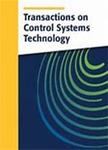版权所有:内蒙古大学图书馆 技术提供:维普资讯• 智图
内蒙古自治区呼和浩特市赛罕区大学西街235号 邮编: 010021

作者机构:Univ Michigan Dept Aerosp Engn Ann Arbor MI 48109 USA US Air Force State Awareness & Real Time Response Grp SARTR Res Lab Riverside OH 45433 USA
出 版 物:《IEEE TRANSACTIONS ON CONTROL SYSTEMS TECHNOLOGY》 (IEEE控制系统技术汇刊)
年 卷 期:2020年第28卷第6期
页 面:2177-2190页
核心收录:
学科分类:0808[工学-电气工程] 08[工学] 0811[工学-控制科学与工程]
基 金:United States Air Force Research Laboratory [88ABW-2018-3153]
主 题:Engines Aircraft Aircraft propulsion Predictive control Shafts Privacy Aerospace control Decentralized control distributed algorithms energy management power control predictive control turbomachinery
摘 要:This article considers predictive control of the jet engine and electrical power distribution system of a more electric aircraft (MEA) with asynchronous distributed controllers. The shafts of the engine spools are mechanically coupled to the electrical generators of the microgrid, linking the dynamics of the two subsystems. As the subsystems and their controllers are designed by different entities, the preservation of subsystem privacy must be an integral part of any coordination mechanism and, due to the underlying subsystems having differing time scales in their dynamics, the subsystem control updates are not guaranteed to be synchronized. To address these requirements, a distributed model predictive control (D-MPC) algorithm based on the alternating direction method of multipliers (ADMM) is proposed, which accounts for and exploits the differing control update rates of the engine and power subsystem controllers while preserving privacy. An extension to the Algorithm that seeks to minimize the required communication volume by downsampling the interactions to the rate of the engine time scale is also presented. Simulation results on a high-fidelity nonlinear system model demonstrate that the distributed controllers can outperform a decentralized controller and their performance can match that of a fully centralized controller.